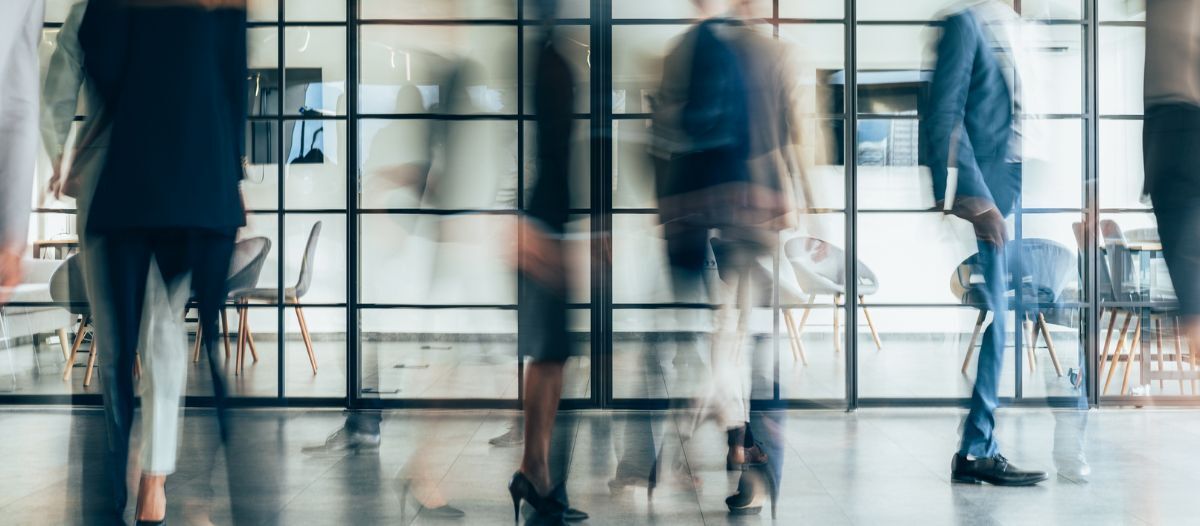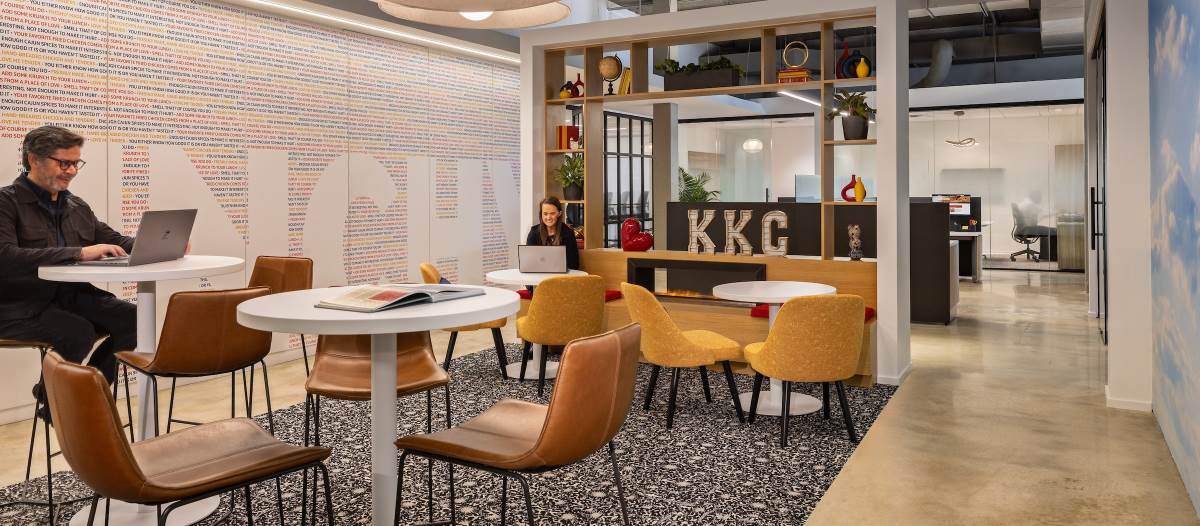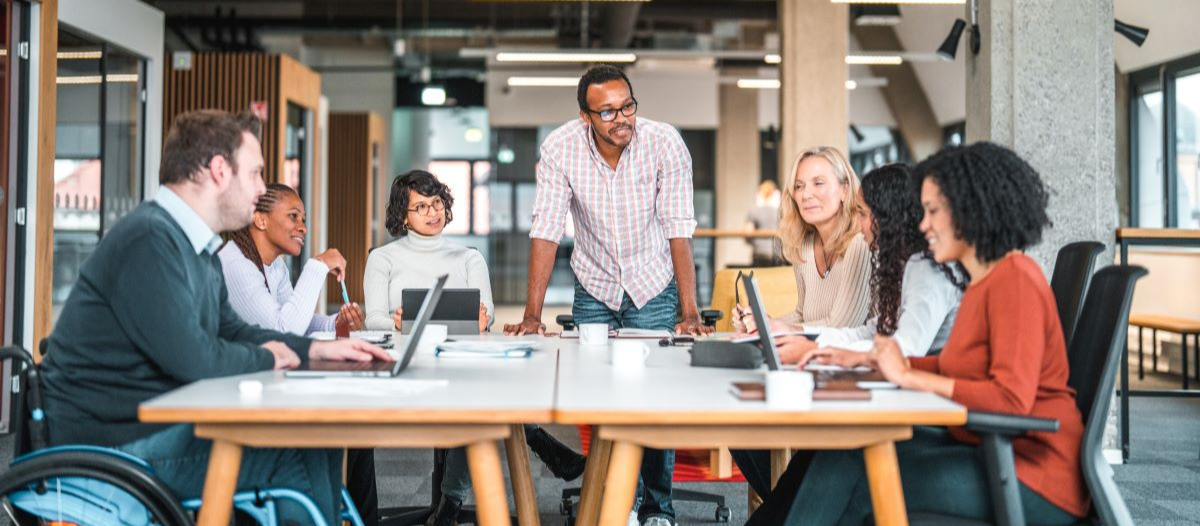Beyond the Desk
How sustainable, purpose-driven office design is shaping the future of work

The same old traditional corporate workplace is not something today’s employees want. They are craving new spaces that can better meet their needs. According to Gensler, there are five types of activities employees are doing during work hours:
-
Working alone
-
Working with others in person
-
Working with others virtually
-
Learning
-
Socializing
The psychology behind purposeful spaces and their impact on employee satisfaction
According to the most recent Gensler Global Workplace Survey, employees who enjoy an exceptional workplace experience are:
- Five times more likely to try innovative work approaches
- Four times more likely to enjoy their time at work
- Two times as likely to feel company pride and recommend their organization to others
Gensler also observed among their clients how purposeful and people-focused design significantly enhances employee engagement, organizational flexibility and community development within companies.
When people work in spaces they connect with, they do not just feel better. They stay longer, innovate more and take pride in their work.
And the keyword is purpose-driven. This should guide the new office design.
People need to connect and work together to get things done. Gensler’s survey showed that meeting, socializing or collaborating with coworkers are three of the top five reasons people come to the office.
How versatile activity-based workspaces support different modes of work
Recent office renovations are performing better than older spaces. Employee choice in work location jumped from 64 percent to 76 percent, according to Gensler. Newer offices rate higher on basics like lighting, air quality, temperature and cleanliness.
Workspace functionality has improved, too. The ability to find space for face-to-face work increased from 70 percent to 80 percent. Access to video conferencing, casual conversation areas and private meeting spaces are better.
Despite these improvements, employees choose where to work based mainly on what is available. Availability trumps comfort, privacy or convenience. And it should not be like this. And, yes, not all companies can afford to have a wide variety of spaces. Source
Source
Companies need both variety and enough spaces. When employees can match their activities to the right spaces, both experience and performance improve.
Worldwide, just 38 percent of workers strongly agree they have a great workplace experience. This varies by country, age, role and industry, but significantly affects engagement and retention. Including employees in workplace design could improve things. Only 21 percent of people in updated spaces felt meaningfully involved in redesign decisions, while 29 percent had almost no input.
Workers who strongly believe that their workplace provides a great experience are significantly more likely to engage in activities that foster working together in person, creativity and personal growth than those who disagree or feel neutral.
Gensler provides even more data. Seventy percent of these employees experiment with new work approaches (versus just 14 percent in lower-rated workplaces).
These employees are:
-
7 times more likely to take reflection time
-
6 times more likely to have spontaneous meetings with colleagues
-
2 times more likely to feel happy while working
-
5 times more likely to stay with their company for the next year
-
2 times more likely to put in discretionary effort beyond job requirements
-
Report significantly higher levels of purpose, meaning and energy
-
6 times more likely to believe their workspace helps attract/retain talent
-
Much more likely to feel the workplace design:
-
inspires innovative thinking
-
reflects company brand values
-
makes employees feel valued
-
So, what do workers actually want? There is a clear gap between current and desired experiences. Most describe their workplace as traditional business centers, collaboration spaces or coffee shop-like environments. But when asked about their ideal workplace, they ranked nature retreats, creative labs and home-like settings alongside formal business spaces.
This shows people want dynamic, collaborative spaces that also support well-being, comfort and playfulness. These preferences are consistent across all age groups. Everyone is reimagining workplaces beyond traditional offices.
Leesman researchers dug deeper into the topic of workplace variety; then released “The Value of Variety” report.
The Leesman Index measures employee satisfaction and how well their workplaces support the work that they do. By analyzing factors like workplace impact and work activity support, the Leesman Index provides valuable insights into the effectiveness of different work environments. The tool works like a benchmark known as an Lmi score, ranging from 0 to 100.
Leesman defines a workplace with “a good variety of work settings” as one where at least half of the employees are satisfied with the variety. They concluded that a workplace with just basic desks and some meeting rooms is not enough anymore. People need variety – quiet spots, team areas and social spaces – to work well and stay healthy.
Also, Leesman analyzed workplaces that have unassigned seating or assigned seating in combination with the variety of settings. Workplaces with unassigned seating (desk hoteling) and a good variety of work settings achieve high employee experience scores.
While assigned seating with good variety technically scores slightly higher for experience, it is not practical for most organizations because:
-
It requires much more space
-
It is especially inefficient with hybrid work (desks empty 2-3 days/week)
-
It costs significantly more
-
It is less sustainable
-
It leads to underutilization (empty desks when people are using other areas)
Office underutilization is a widespread problem: 64 percent of global office space remains underutilized according to CBRE. The financial and sustainability costs of maintaining assigned desks plus variety spaces make it an impractical solution for most organizations, which explains why this setup is rare despite its theoretical benefits for employee experience.
Also, Gensler and JLL observed that the employee's entire journey matters when designing workplaces:
- From surrounding urban environment
- Through building entry and shared spaces
- To their actual workplace destination
JLL calls this the “street to seat experience.”
The rise of biophilic design elements that bring nature indoors
By 2030, organizations expect increased focus on energy efficiency, decarbonization, well-being, certification, climate resilience and circular economy principles.
JLL's consumer survey found 71 percent of Gen Z and millennials prioritize environmentally friendly options compared to 55 percent of older generations. Environmental impact is among their top decision drivers, connecting sustainability directly to talent attraction.
Companies are starting to bring nature inside their workplaces as well.
When people spend time in nature, stress levels decrease, cognitive function improves and mood elevates. Biophilic design leverages these biological responses by bringing elements of the natural world indoors.
This goes way beyond decorative plants. Organizations are integrating natural elements throughout the workplace experience:
- Natural materials like wood, stone and rattan have replaced synthetic surfaces, adding warmth and texture while reducing environmental impact.
- Living walls and indoor gardens create focal points that dramatically transform spaces while improving air quality and acoustic properties.
- Natural light optimization is crucial, with office layouts reconfigured to maximize daylight penetration. Smart glass and strategic window placement help regulate light levels throughout the day, synchronized with circadian rhythms to support alertness and relaxation.
- Water features provide both visual interest and ambient sound that masks office noise while creating a calming effect. The gentle sound of flowing water has been shown to reduce stress and improve concentration.
A Human Spaces research report showed that biophilic design can improve productivity by 6 percent and creativity by up to 15 percent. It was also proven that a biophilic environment improves short-term memory by 14 percent.
Research in a 90-person office revealed that employees with windows overlooking natural scenes recovered from minor stress significantly faster than colleagues facing blank walls. Moreover, the study found a direct relationship between time spent viewing nature and heart rate reduction speed. This proves nature's straightforward impact on our physical stress response and illustrates how natural elements can help buffer against everyday workplace pressures.
Absenteeism decreases as employees experience fewer stress-related illnesses and report higher overall well-being in biophilically designed spaces. The improved air quality from living plants also reduces respiratory issues.
Creativity and problem-solving improve when people work in environments that provide both stimulation and restoration. Natural settings provide the perfect balance of inspiration without overwhelming cognitive resources.
Workplaces with strong biophilic elements create memorable experiences that boost talent attraction as well as retention.
Real-world examples that successfully balance eco-consciousness with human-centered design
Etsy’s Dublin office: Connections in a sustainable hybrid workspace
Etsy’s Dublin office is a workspace centered on community and craftsmanship. The design showcases local artisans' work, incorporates natural elements and features flexible spaces that adapt to hybrid working.
Etsy chose a one-floor design that breathes adaptability. The workspace features height-adjustable desks, versatile furniture and diverse meeting areas to support different working preferences. This approach ensures the environment can grow and change with the company, while supporting hybrid working.
Natural materials, lots of daylight and indoor plants create a calming workspace that supports mental and physical well-being. Etsy sourced materials and furnishings locally, so the project’s carbon footprint was greatly reduced.
Tetra Pak’s Future Work Experience
Tetra Pak is the world's leading food processing and packaging solutions company. It launched its Future Work Experience program in 2021. The program stands on four key pillars: flexible working arrangements, purpose-based workplaces, digital tools, and health and well-being.
Activity-based working and flexible scheduling options like compressed work weeks and job sharing existed before the pandemic. By emphasizing digital tools, the company ensures that employees can work effectively from any location, anywhere in the world.
Tetra Pak provides diverse spaces to accommodate different needs, from breakout areas to prayer rooms.
Tetra Pak operates 216 sites across 73 countries throughout the Americas, Europe, Africa and Asia. The company recognizes that effective workplaces must respect cultural and regional differences. This includes practical considerations — like providing space for larger winter clothing in Swedish offices — as well as cultural elements, such as maintaining a traditional table tennis table at the Lagos, Nigeria, location.
Tetra Pak utilizes Leesman data to understand their global workforce's varying needs and to evaluate employee satisfaction following Future Work Experience renovations. The 15 completed Future Work Experience offices included in the most recent Leesman survey achieved an impressive average Lmi score of 74.6.
CitiBank Wealth Hub: banking meets biophilia
The CitiBank Wealth Hub defies traditional banking aesthetics. Looking more like a tech company headquarters than a financial institution, the space perfectly embodies Singapore's "garden city" identity while making a bold statement.
The design creates a unique fusion of banking and biophilia, featuring dense indoor landscaping with plentiful natural light.
Instead of conventional walls, the main area contains scattered meeting pods for private client consultations. Each pod is surrounded by its own soil bed filled with lush plants that serve multiple purposes: air purification, enhanced privacy, mood improvement and anxiety reduction.
The designers selected luxurious materials from reception to the bar and office areas to help private banking clients feel comfortable. The space showcases premium marble, wood cladding, ergonomic furniture, subtle overhead lighting and additional greenery-filled planter boxes throughout.

Conclusions
The evolution of workplace design is not just a trend but a necessary response to the changing expectations and needs of today's workforce.
The data is clear: workplaces that offer variety, choice and purpose dramatically improve employee experience scores and drive positive business outcomes. When workers have access to the right spaces for different activities — from focused work to collaboration, learning and socializing — they show increased innovation, happiness and loyalty.
Biophilic design emerged as a particularly powerful strategy, with research confirming its ability to reduce stress, improve cognitive function and enhance overall well-being. The integration of natural materials, abundant daylight, living walls and other natural elements is not just aesthetically pleasing — it addresses fundamental human needs and delivers quantifiable improvements in productivity, creativity and health.

Read more on Workplace and Occupancy & Human Factors or related topics Space Management , Occupant Services and Workplace Utilization
Explore All FMJ Topics






 Source
Source



